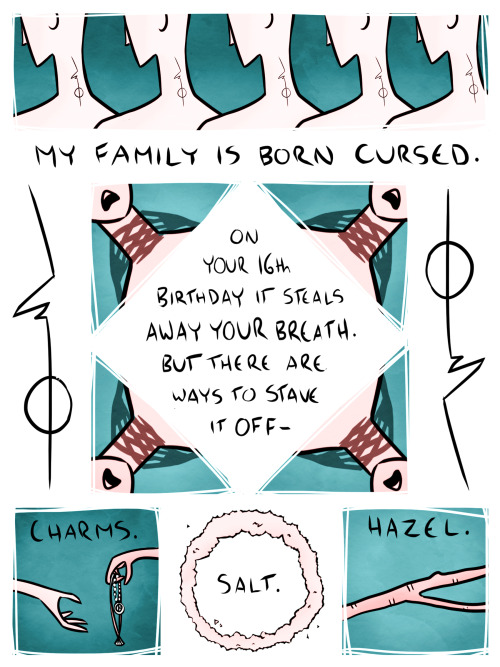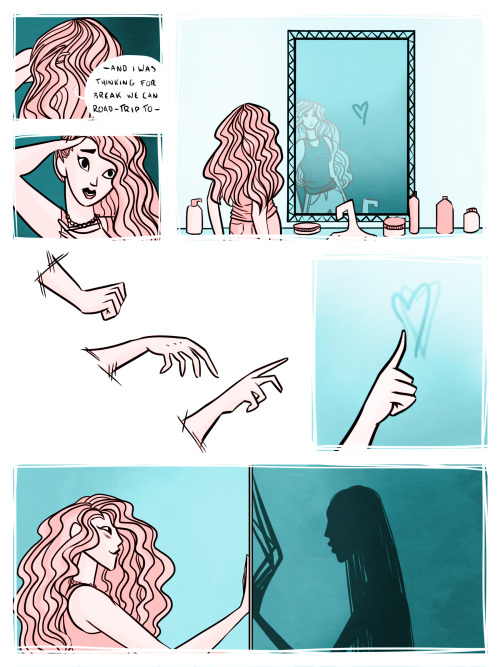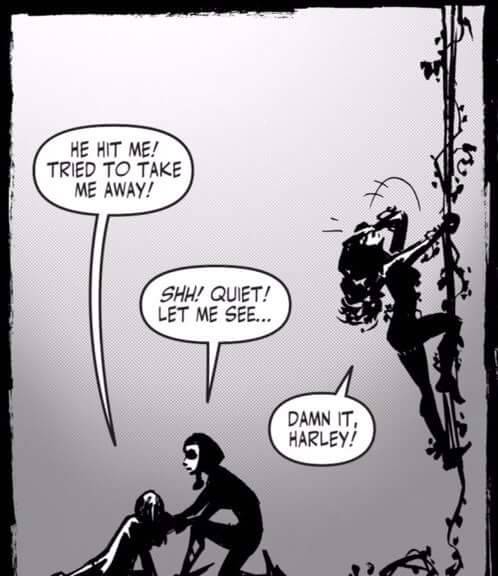Pixie-not - Im Screaming


More Posts from Pixie-not and Others

I was tryna take a pic of some girls shoes quick and didn't realize the front cam was on Fml Those were some good shoes tho










a little comic about kisses and curses. happy halloween!
mY TABLET FROZE ON THIS PIC FOR A FEW SECONDS AND I SCREAMED

Anti!
Solar System: Things to Know This Week
From images to virtual reality and interactive simulations, NASA offers plenty of ways to explore our solar system – and beyond – in 3-D.

1. Step One: Get the Glasses
Many of the images and interactive features require special glasses with red and blue lenses.
Make regular 3-D glasses: http://go.nasa.gov/2lwQOoP
Make fancy Mars rover 3-D glasses: http://go.nasa.gov/2lwEmWe
2. Breaking News (Virtual Reality Edition)
Big news from 40 light-years away (235 trillion miles). Our Spitzer Space Telescope revealed the first known system of seven Earth-size planets around a single star. Three of these planets are firmly located in the habitable zone, all of them have the potential for water on their surfaces.
No glasses required.
Get to know one of those planets, TRAPPIST-1d in virtual reality: http://go.nasa.gov/2ldaGKY
Try the virtual reality panorama (especially great for a phone or tablet):
http://go.nasa.gov/2ld5jvt

This image was created by combining two images from STEREO B (Feb. 24, 2008) taken about 12 hours apart, during which the sun’s rotation provides sufficient perspective to create a nice 3-D effect.
3. Free-Range 3-D Exploration
Our Eyes on the Solar System app allows free exploration of Earth, our Solar System and thousands of worlds discovered orbiting distant stars. And, you also can explore it all in 3-D!
Under visual controls just check 3-D, pop on your glasses and explore.
Download Eyes on the Solar System: http://eyes.nasa.gov/
4. Your Star in 3-D
The STEREO (Solar TErrestrial RElations Observatory) mission studied the sun in 3-D with twin satellites.
Explore the Stereo 3D gallery: http://go.nasa.gov/2ldrzFv

5. National Parks in 3-D
The Earth-orbiting Terra satellite’s Multiangle Imaging SpectroRadiometer (MISR) instrument provides 3-D views while orbiting Earth, including some great shots of our National Parks.
Go to the parks: http://go.nasa.gov/2bk5XHP
6. Get in the Pilot’s Seat
Take a look inside the cockpit of our high altitude ER-2 aircraft as it descends for landing at Kaneohe Bay, Hawaii. This month, scientists used used the aircraft to collect data on coral reef health and volcanic emissions and eruptions. Flying at 65,000 feet, above 95 percent of Earth’s atmosphere, the ER-2 has a unique ability to replicate the data a future satellite could collect. Data from this mission will help in developing a planned NASA satellite mission to study natural hazards and ecosystems called Hyperspectral Infrared Imager, or HyspIRI.
Explore the 360 video: youtu.be/Zwkr-nsbaus
Read more: http://go.nasa.gov/2m8RJ0f
7. Moon Views
The Lunar Reconnaissance Orbiter creates 3-D images from orbit by taking an image of the moon from one angle on one orbit and a different angle on a separate orbit.
See the results: http://go.nasa.gov/2lvooeZ

This stereo scene looking back at where Curiosity crossed a dune at “Dingo Gap” combines several exposures taken by the Navigation Camera (Navcam) high on the rover’s mast.
8. Martian 3D
Our Mars fleet of rovers and orbiters captures the Red Planet from all angles - often in 3-D.
Suit up and start exploring: http://go.nasa.gov/2lddjN4
9. Saturn in 3-D
The Cassini spacecraft’s mission to Saturn is well-known for its stunning images of the planet and its complex system of rings and moons. Now you can see some of them in 3-D.
See Saturn: http://go.nasa.gov/2mCQhiZ
10. Want More? Do It Yourself!
Put a new dimension to your vacation photos. Our Mars team created this handy how-to guide to making your own eye-popping 3-D images.
Get started: http://go.nasa.gov/2lddc46
BONUS: Printer-Friendly
Why stop with images? The Ames Research Center hosts a vast collection of 3-D printable models ranging from the moon craters to spacecraft.
Start printing: http://go.nasa.gov/2ldsMg1
Discover more lists of 10 things to know about our solar system HERE.
Follow us on Tumblr for your regular dose of space: http://nasa.tumblr.com


First pic I made in Febuary, the last pic of Yurio and Yuri I made in December woah
tryin 2 draw like ‘why am i so bad at the only thing im good at’






Harley & Ivy

Everyone better take this so I can judge your result
-
 cookiesyummy reblogged this · 3 weeks ago
cookiesyummy reblogged this · 3 weeks ago -
 christophosaurus reblogged this · 3 months ago
christophosaurus reblogged this · 3 months ago -
 pallegina reblogged this · 3 months ago
pallegina reblogged this · 3 months ago -
 culturally-deviant reblogged this · 3 months ago
culturally-deviant reblogged this · 3 months ago -
 fuckeryandnitemares reblogged this · 4 months ago
fuckeryandnitemares reblogged this · 4 months ago -
 headab0vethewavez reblogged this · 4 months ago
headab0vethewavez reblogged this · 4 months ago -
 kanedaslide reblogged this · 4 months ago
kanedaslide reblogged this · 4 months ago -
 dreamy-wren liked this · 4 months ago
dreamy-wren liked this · 4 months ago -
 kanedaslide liked this · 4 months ago
kanedaslide liked this · 4 months ago -
 jasminedarling reblogged this · 4 months ago
jasminedarling reblogged this · 4 months ago -
 homowoman reblogged this · 4 months ago
homowoman reblogged this · 4 months ago -
 sowhatta liked this · 4 months ago
sowhatta liked this · 4 months ago -
 tabbycatsdream reblogged this · 4 months ago
tabbycatsdream reblogged this · 4 months ago -
 tabbycatsdream liked this · 4 months ago
tabbycatsdream liked this · 4 months ago -
 sir-buh reblogged this · 4 months ago
sir-buh reblogged this · 4 months ago -
 sir-buh liked this · 4 months ago
sir-buh liked this · 4 months ago -
 trigunstargaze liked this · 4 months ago
trigunstargaze liked this · 4 months ago -
 lord-morpheus liked this · 4 months ago
lord-morpheus liked this · 4 months ago -
 pairofsunflowers liked this · 4 months ago
pairofsunflowers liked this · 4 months ago -
 justalillesbean reblogged this · 4 months ago
justalillesbean reblogged this · 4 months ago -
 philomonstrum liked this · 4 months ago
philomonstrum liked this · 4 months ago -
 patrickdiomedes reblogged this · 4 months ago
patrickdiomedes reblogged this · 4 months ago -
 restlessbuthopeful liked this · 4 months ago
restlessbuthopeful liked this · 4 months ago -
 coolasice1991 liked this · 4 months ago
coolasice1991 liked this · 4 months ago -
 peaches-and-ebony reblogged this · 4 months ago
peaches-and-ebony reblogged this · 4 months ago -
 bitchykuromi liked this · 4 months ago
bitchykuromi liked this · 4 months ago -
 feralecologist liked this · 4 months ago
feralecologist liked this · 4 months ago -
 dodi-li reblogged this · 4 months ago
dodi-li reblogged this · 4 months ago -
 dodi-li liked this · 4 months ago
dodi-li liked this · 4 months ago -
 wormthe liked this · 4 months ago
wormthe liked this · 4 months ago -
 rhubarbspring reblogged this · 4 months ago
rhubarbspring reblogged this · 4 months ago -
 rhubarbspring liked this · 4 months ago
rhubarbspring liked this · 4 months ago -
 lovecorethot reblogged this · 4 months ago
lovecorethot reblogged this · 4 months ago -
 cozybearz liked this · 4 months ago
cozybearz liked this · 4 months ago -
 strangeauthor reblogged this · 4 months ago
strangeauthor reblogged this · 4 months ago -
 prokage reblogged this · 4 months ago
prokage reblogged this · 4 months ago -
 lifes-reject liked this · 6 months ago
lifes-reject liked this · 6 months ago -
 sleepydreameroncloud9 reblogged this · 6 months ago
sleepydreameroncloud9 reblogged this · 6 months ago -
 kimberlocster liked this · 8 months ago
kimberlocster liked this · 8 months ago -
 perfectlyimproper liked this · 8 months ago
perfectlyimproper liked this · 8 months ago -
 tears-of-joy reblogged this · 9 months ago
tears-of-joy reblogged this · 9 months ago -
 headab0vethewavez reblogged this · 9 months ago
headab0vethewavez reblogged this · 9 months ago -
 vaginawitchcraft reblogged this · 9 months ago
vaginawitchcraft reblogged this · 9 months ago -
 p3ss1n liked this · 10 months ago
p3ss1n liked this · 10 months ago -
 totally-twila liked this · 1 year ago
totally-twila liked this · 1 year ago
